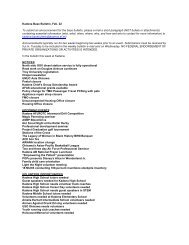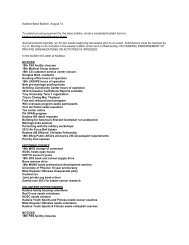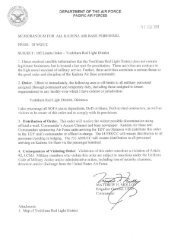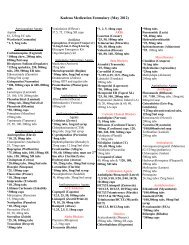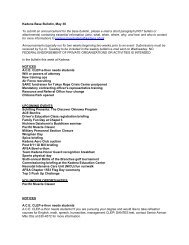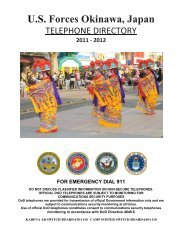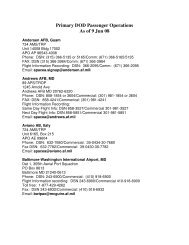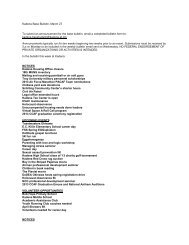JP 3-52, Joint Airspace Control - Defense Technical Information ...
JP 3-52, Joint Airspace Control - Defense Technical Information ...
JP 3-52, Joint Airspace Control - Defense Technical Information ...
Create successful ePaper yourself
Turn your PDF publications into a flip-book with our unique Google optimized e-Paper software.
CHAPTER IVAIRSPACE CONTROL EXECUTION BY PHASE“The way of the warrior is to master the virtue of his weapons.”Miyamato Musashi, A Book of Five RingsThe <strong>JP</strong> 5-0, <strong>Joint</strong> Operation Planning, phasing construct is an extremely useful guideto generalize airspace control responsibilities, activities, systems, documents, and liaisonrequirements across the range of military operations. Although an operation couldproceed logically from phase 0 to V, most operations will not. Each operation is uniqueand will require unique solutions to military obstacles.1. Phase 0 — Shapea. The shape phase is inclusive of normal and routine military airspace activities todeter potential adversaries and ensure or solidify relationships with friends and allies.Various joint, multinational, and interagency airspace activities are executed with theintent to enhance international legitimacy and gain cooperation in support of definedmilitary and national strategic objectives. They are designed to ensure success byshaping perceptions and influencing the behavior of both adversaries and allies,developing allied and friendly military capabilities for self-defense and coalitionoperations, improving information exchange and intelligence sharing, and providing USforces with peacetime and contingency airspace access.b. The HN retains ACA and joint forces primarily use existing international orHN aeronautical information publications (AIPs) for airspace procedures orguidelines; airspace and navigation services are the sovereign right and responsibility ofthe HN.c. Although the JFC may not designate a standing ACA during this phase, theJFC should appoint a lead agent, normally the commander, Air Force forces, forcoordinating the resolution of issues related to airspace management, ATC, terminalinstrument procedures, and navigation aids within the operational area. Thecommander, Navy forces, is normally assigned responsibility for airspace proceduresapplicable to fleet air operations over international waters within the operational area andonly advises the JFC’s lead agent as appropriate. The JFC’s lead agent is delegated theauthority for developing joint force airspace requirements in coordination with the otherService components and representing those joint force airspace requirements to theDepartment of <strong>Defense</strong> (DOD), interagency, international, or HN authorities asappropriate. Additionally, the lead agent normally serves as the focal point to:(1) Provide assistance to the JFC, components, Services, and supportingcommands on airspace, air traffic, or navigation aid matters.IV-1



